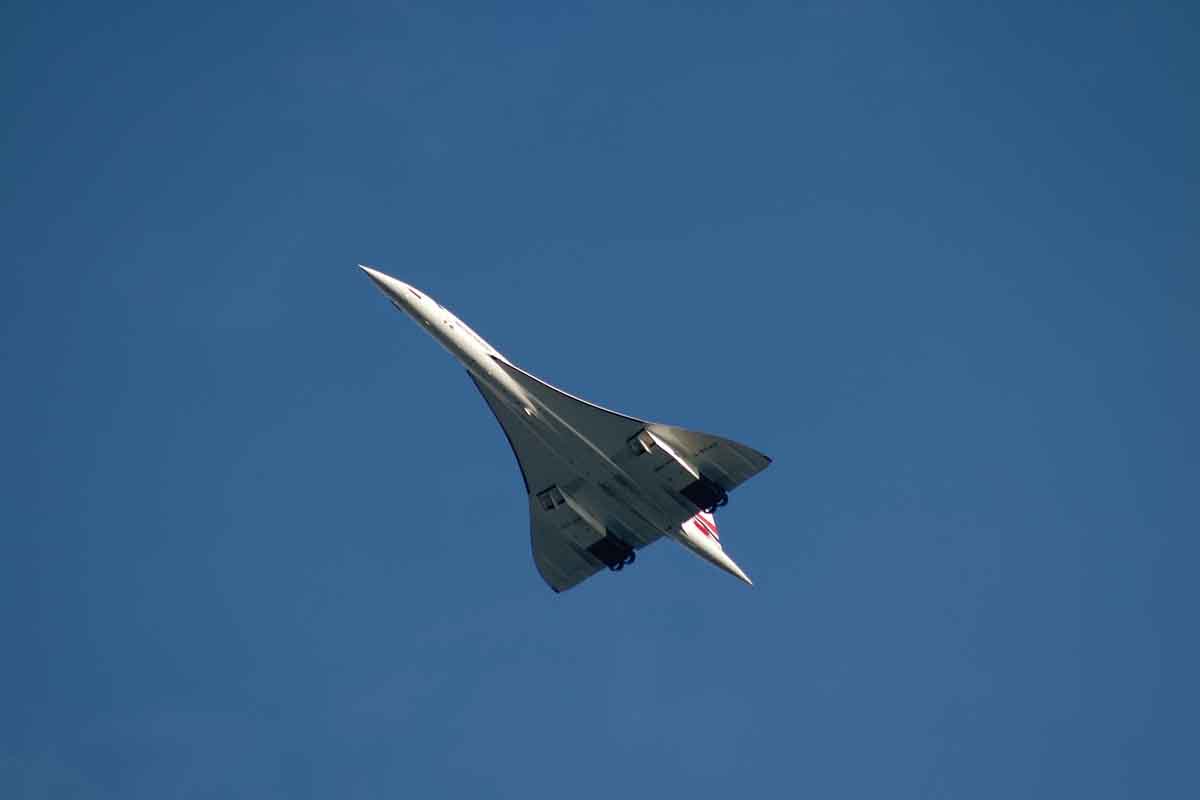On 24 October 2003, the supersonic Concorde flew on its last scheduled flight from New York to London – and left behind an enduring, endearing mystery of why the greatest, fastest, most remarkable aircraft ever made was retired to its grave. Two other Concorde aircraft flew in sequence in London’s Heathrow airport that early winter evening this October day 16 years ago. Thousands of people awaited the final Concorde passenger flight.
And they saw her arrive in the dying daylight of dusk: first the distant undercarriage lights, then the rising crescendo of her earth-shaking roar, and the majestic landing like a spectacular avian emissary of Indra, the king of gods and god of thunder. Among distinguished names that disembarked at Heathrow from that final British Airways Flight 002 was actress Joan Collins who glumly declared, “Civil aviation is going backwards”. So it seemed. The Concorde flew passengers across the Atlantic in about three hours, and 16 years later the average flight time from New York to London is eight hours.
Advertisement
I was reminded again of the Concorde this October 20 when Australian national carrier Qantas flew a Boeing 787-9 with 49 people in a non-stop test flight from New York to Sydney, a 16,200-km air odyssey that took nearly 20 hours. The Concorde would have done it in under seven hours. This year 2019 also marks the Concorde Golden Jubilee. Fifty years ago in 1969, the supersonic Concorde took off and changed aviation history.
Civilians could fly at twice the speed of sound – Mach 2 or 2,469 kms per hr – faster than Earth’s rotation, so fast it was actually time-travel: depart 6 pm in London and arrive in New York at 4.30 pm the same day. Concorde pilot Captain John Hutchinson who flew 70 different types of aircraft, said: “Nothing like a Concorde.” Art blended with technology in this masterpiece of invention and innovation unsurpassed in aviation history. Afterburners hurtled the Concorde beyond the sound barrier, boosting the four Rolls-Royce engines. The thunderous Concorde takeoffs and landings were painful to some, evoked jaw-dropping awe in others.
The Concorde sonic boom (sounded like a big explosion) had governments restricting it from breaking the sound barrier over land. But no doubt the Concorde was special, a visually stunning, beautiful birdmachine merging mind-numbing power with poetic grace. Concorde fliers were treated like royalty. Each passenger received a certificate as a Concorde flier, and inflight service that became legend. Flight attendants served gourmet food 18 kilometers above sea level, with the temperature outside minus 70 degrees Celsius.
A coin could be balanced on its edge on the food tray – so steady was the Concorde flying at 2,400 km/ hr, 60,000 ft high. Britain and France in 1962 collaborated to make the Concorde, setting aside their traditional rivalry. The French insisted the letter “e” be added to the “Concord,” and the British agreed the name gained better balance with the ‘French e’.
‘Concorde’ means ‘agreement.’ Both British Airways and Air France agreed to retire the Concorde in 2003. Fewer passengers (New York- London return fare cost US$11,000 in current value), the aviation slump after 9/11, and high maintenance costs were touted as reasons. But other experts believed that the Concorde’s demise owed more to transatlantic politics than business logistics. The Concorde could have lived on as a charter service, as it did before being shut down.
The Concorde tragedy in July 2000 was not the reason either, when an Air France Concorde caught fire during takeoff in Paris and crashed into an airport hotel, killing all 109 people on board and four on the ground. A tiny metal strip on the runway ripped the tire, and a tire bit smashed into a fuel tank to cause the fatal fire. But like a Phoenix rising from the fire, the Concorde took off again to New York on 7 November 2001, 15 months after the fleet was grounded. Some called the grounding itself an overreaction. The Concorde lasted 27 years, one-third of civil aviation history, and was not a “failure” as widely perceived. Concorde completed over 50,000 flights, carried over 2.5 million passengers.
Russia and the US too attempted a Concorde equivalent, but failed. The American Supersonic Transport project, at the Boeing Center in Seattle, 1969, spent a billion dollars before the US Senate ended further funding, and Boeing 2027 died in 1971. Incredible to even now imagine the supersonic Concorde soaring in the early 1970s, at same time when steam engines ruled railway travel of my school summer holidays – the distinct smoky smell of coal-fire, the locomotive spewing grey-black fumes with its whistle shrieking like an angry beast out of hell.
More than a century of technology ahead of the steam locomotive, the 62-meter-long Concorde could seat only 90 to 120. But she ruled the skies. Concorde pilots said subsonic jets they saw flying 20,000ft below seemed to be “flying backwards” – the Concorde’s Mach 2 speed was nearly thrice that of modern airliners. Concorde fans await the next supersonic airliner, with possibilities including the Airbus hypersonic aircraft at Mach 4.5, four times the speed of sound, or from the Denver-based company ‘Boom Supersonic’. Whether a successor arrives or not, the Concorde lives on with her legacy: go beyond fear, beyond barriers, beyond the beyond.
(The writer is a senior, Mumbai-based journalist)
















